Nihonbashi Bridge, despite being unfortunately wedged under an expressway is one of the most iconic landmarks in Tokyo, Japan.

It is a historic bridge that spans the Nihonbashi River, which has been a vital transportation route for centuries.
The bridge has a rich history and has played a significant role in the development of Tokyo as a city.
The first Nihonbashi Bridge was built in 1603, and it was made of wood. It was an arched bridge that linked two sides of the Nihonbashi River. The current bridge, which is a dual-arch design made of stone, was constructed in 1911. It replaced the wooden bridge that had stood for hundreds of years. The bridge is an expression of the wealth and authority of the shogunate’s new capital, Edo.
The bridge is not only a symbol of Tokyo’s past but also an important part of its present.
The bridge has undergone renovations over the years, but it still retains its historical charm and significance.
History
The Nihonbashi Bridge has a rich history that dates back to the 17th century. This iconic bridge is in the Chuo ward of Tokyo and is one of the most important landmarks of the city. This section will discuss the early history, construction and design, and significance of the Nihonbashi Bridge.
Early History
The Nihonbashi Bridge was first built in 1603, the same year that the Edo Period shogunate was established. It was built over the Nihonbashi River, which was a major transportation route during that time. The bridge was a crucial landmark as it marked the starting point of five major roads that lead into and out of Tokyo. The district had prospered with the opening of this bridge in the early 17th century.
Construction and Design
The original Nihonbashi Bridge was made of wood and had a length of 60 meters. It was a drawbridge that allowed boats to pass through. However, due to frequent earthquakes and fires, the bridge was reconstructed times. The current bridge that stands today was built in 1911 and is made of stone. It replaced the wooden one that had stood for hundreds of years. The twin arch bridge is stately in design and has been designated as an Important Cultural Property.
Significance
The Nihonbashi Bridge is an important symbol of Tokyo’s history and culture. It is the starting point of Japan’s extensive network of roads and has played a crucial role in the development of the city. The district around the bridge has been a hub of commercial and residential activities since the Edo period. Today, the bridge carries a bronze signpost with the words “Origin of Roads in Japan,” and the district is a popular destination .
Location and Features
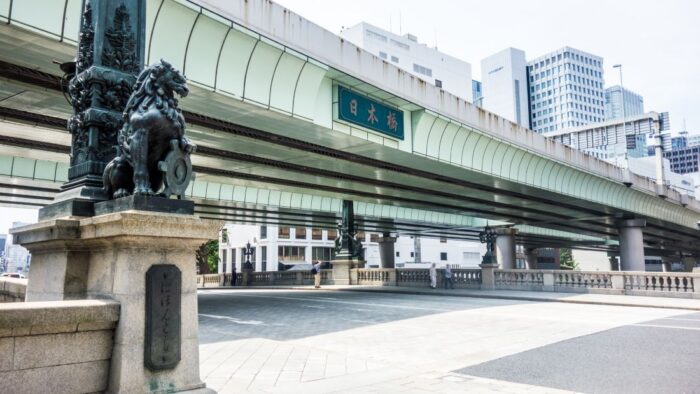
Geography and Surroundings
Nihonbashi Bridge is in the Chuo ward of Tokyo, Japan. It spans the Nihonbashi River, which flows into the Sumida River, and is situated at the point where the river meets the Ginza and Yaesu districts. The bridge is also near the Tokyo Station, making it easily accessible .
The surrounding area is a bustling commercial district, with shops, restaurants, and hotels. The bridge is also surrounded by other notable landmarks, including the Mitsui Memorial Museum, the Bank of Japan, and the Tokyo Stock Exchange.
Architectural Features
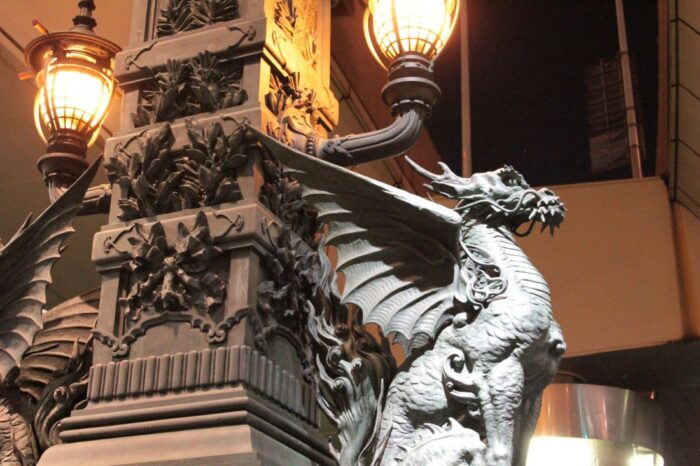
Nihonbashi Bridge is a stone bridge with a length of approximately 26 meters and a width of approximately 34 meters. The bridge features four shishi lions at its corners, which are believed to protect it from evil. In the center of the bridge, there is a kirin statue, which is a symbol of prosperity.
The bridge has undergone renovations and reconstructions over the years. The current bridge was completed in 1911 and features a unique design that combines Western and Japanese architectural elements. The bridge’s distinctive appearance has made it a popular spot for photography and sightseeing.
Current Condition and Maintenance
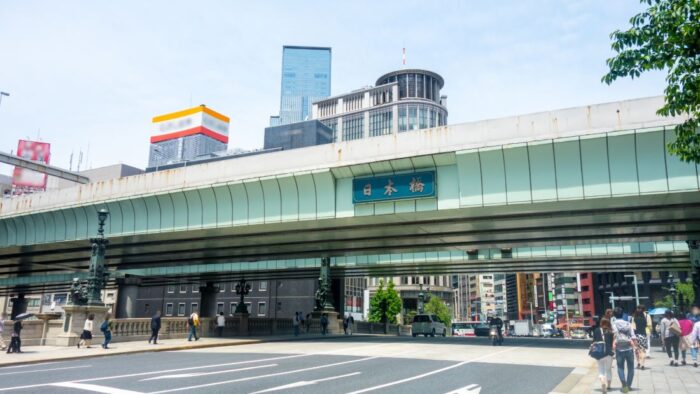
Despite its age, Nihonbashi Bridge is in good condition and is regularly maintained by the local government. The bridge has undergone repairs and renovations over the years, with the most recent renovation taking place in 2007. The renovation included the installation of new lighting and the repair of the bridge’s stones and railings.
The bridge’s maintenance is funded by the Chuo ward government, which has allocated funds for the bridge’s upkeep in its annual budget. The government also conducts regular inspections of the bridge to ensure that it remains safe for pedestrians and vehicles.
Cultural Significance
Nihonbashi Bridge holds immense cultural significance in Japan, and has been celebrated in art, literature, and festivals for centuries.
Art and Literature
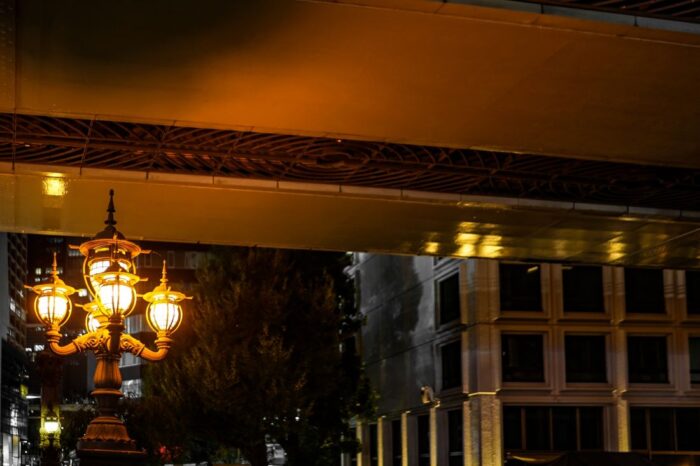
The bridge has been the subject of numerous works of art and literature, including woodblock prints by famous artists such as Hiroshige and Hokusai. These prints depict the bridge and its surroundings in different seasons and times of day, capturing the beauty and vitality of the area.
Many famous writers have also written about Nihonbashi Bridge, including the renowned novelist Yasunari Kawabata. In his novel “The Old Capital,” he describes the bridge as “the heart of Tokyo,” a place where the past and present intersect.
Festivals and Celebrations
Nihonbashi Bridge is also an important part of many festivals and celebrations in Japan. One such festival is the Nihonbashi Sakura Festival, which takes place in April when the cherry blossoms are in bloom. The festival features food stalls, live music, and traditional Japanese performances, and is a popular event for both locals and visitors.
Another festival that takes place near the bridge is the Nihonbashi Ebisu Festival, which is held in January. This festival celebrates the god of prosperity and features a parade with floats, traditional dances, and food stalls.
Tourism and Visitors
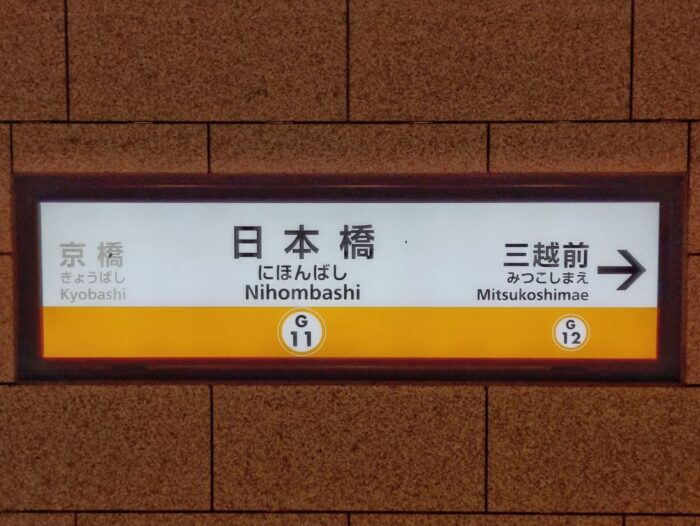
There are also many shops, restaurants, and hotels in the area, making it a great place to explore and experience Japanese culture. You can stroll along the nearby streets, which are lined with traditional shops selling everything from handmade crafts to fresh seafood.
Overall, Nihonbashi Bridge is a symbol of Japan’s rich cultural heritage and is a must-see destination for anyone visiting Tokyo.





